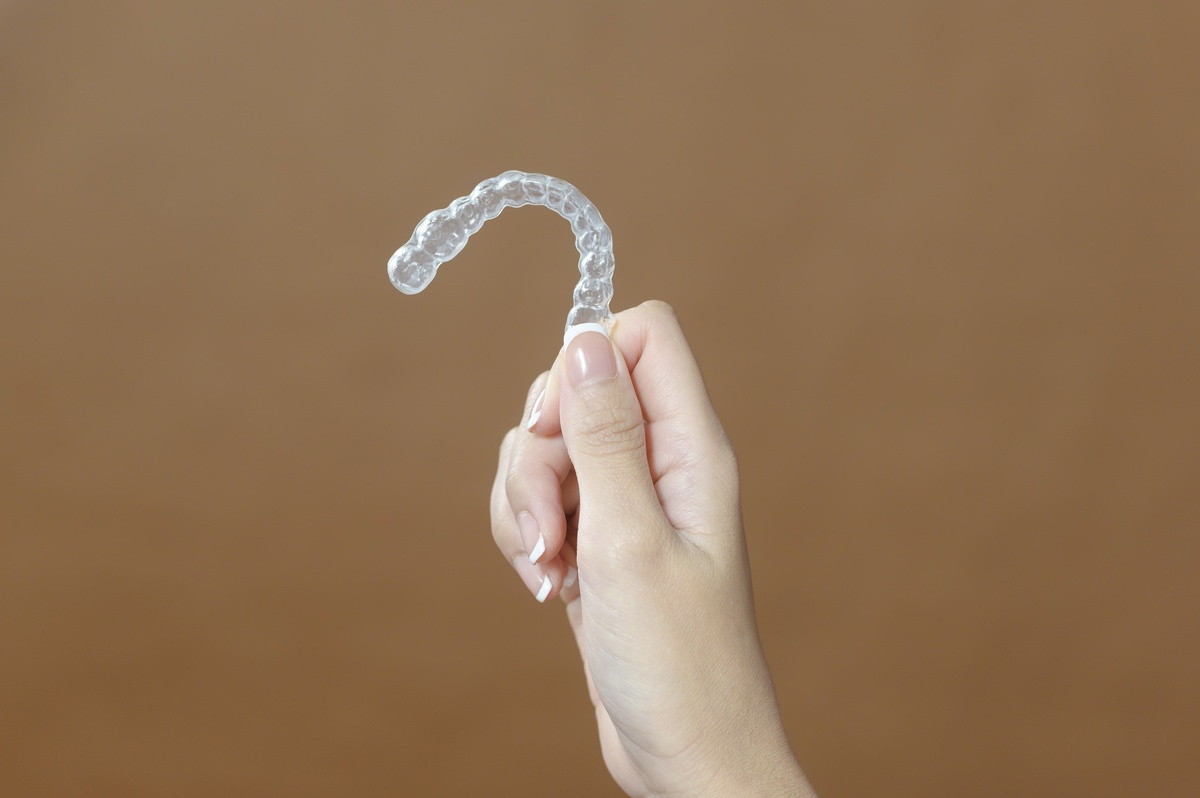Everyone desires a beautiful smile, but achieving it takes a lot of effort and assistance. Clear aligners are being utilized successfully by orthodontists and general dentists to tackle this issue. A basic difference between braces and clear aligners is as follows:
Braces are wire-connected metal/composite/ceramic brackets that help with tooth alignment or movement. On the other hand, aligners are custom-made removable tight-fitting mouthpieces that are transparent and aesthetic.
Who Is Eligible For Invisible Aligners?
Invisible aligners are custom-made for a snug fit and are an excellent alternative for braces treatment especially in adults due to ease of treatment particularly because of their invisibility and less discomfort. Clear aligners should be used by people who have mild to moderate crowding and spacing issues. Patients with severe spacing issues, overbites, and crossbites may require more specialized care through the aid of auxiliaries or even metal braces. Straightening a child's teeth is more challenging with the aligners but can be performed with the aid of attachments and auxiliaries. Furthermore, the dentist needs to evaluate the treatment for longer durations for patients in a growth phase in order to monitor that no relapse appears over the years. Clear retainers can serve the purpose to keep teeth aligned over the years if the compliance to wearing the retainers is persistent in the patient.
Issues Clear Aligners Cannot Resolve
In some circumstances, teeth can tilt forward or back to fit, and clear aligners cannot perfectly align the tooth into position if the angle is greater than 45 degrees. However, the nature of the case can vary and sometimes clear aligners are able to treat the cases with a tilt of more than 45 degrees which entirely depends on how the aligners are designed in manufacturing to fit the teeth. Discomfort can occur for teeth that are tilted more than 45 degrees while inserting and removing the aligners.
Teeth Position - It is typical for teeth to move into an alternate position when the mouth is crowded. Several sets of aligners are used to move teeth in an alternate manner and resolve crowding. Clear aligners will not shift molars or canines that are too mal-aligned as their movement may require the use of metal braces to create more force with metal wires for alignment.
Midline Movements - Patients with front teeth that do not align with their midline can now benefit from clear aligner therapy, a method designed to correct gaps of up to 2mm to the right or left per arch. However, if it is more than that, auxiliaries are required with clear aligners, or alternatively braces will have to be used.
Previous Dental Work - Some individuals may require limited treatment with clear aligners as a result of previous dental procedures such as implants, bridges, and crowns on certain teeth. In these cases, the movement of restored teeth is either reduced or limited (in case of implants are avoided) to circumvent any bad effects on restorations. Nonetheless, clear aligner treatment can be performed smoothly for previously restored teeth as well (restorations, inlays/onlays, root canal treated teeth) if the previous history and X-rays are available.
Large Gaps Between Teeth - Clear aligners have restrictions when correcting teeth gaps. It can only successfully close 6mm of space per arch (top or bottom).
Intrusion And Extrusion – Orthodontists can reposition teeth from their original position so that all of your teeth are at an ideal height that follows your natural smile arc. For the movement of intrusion and extrusion, attachments are replaced on teeth over which aligners snuggly fit to produce the required movements. Movements either raise or fall the teeth above or below the occlusal plane in the jawbones. Braces use far more effort to do this than clear aligners. However, movements can be performed within biological limits and are more easily performed in the front teeth as compared to the back teeth.
Conclusion
Clear aligners are a good treatment choice for orthodontic problems with limitations in some cases with complex treatments. If you're considering using clear aligners to correct orthodontic difficulties, you should know what they can and cannot do. Contact ClearPath Orthodontics for aligner price in Pakistan and your other concerns, they’ll connect you with your nearest certified dentist to help you know if you are suitable for clear aligner treatment. ClearPath aligners are the market leaders when it comes to invisible braces and they have certified doctors all over the country whom you can consult for your treatment.


No comments yet